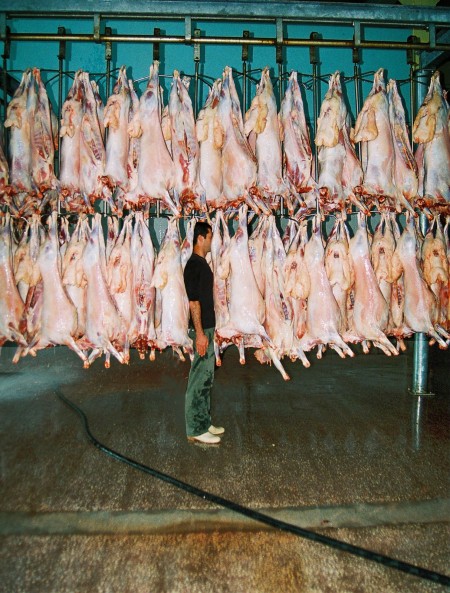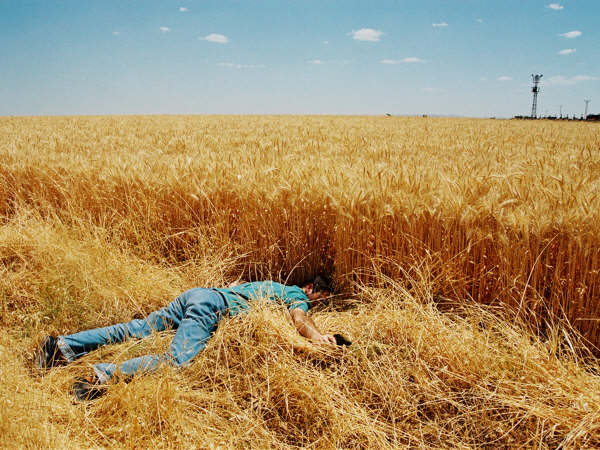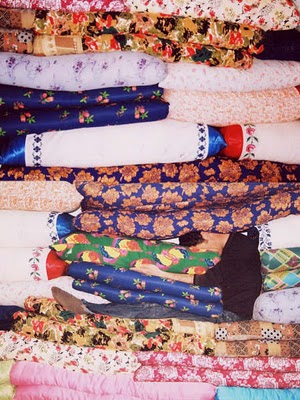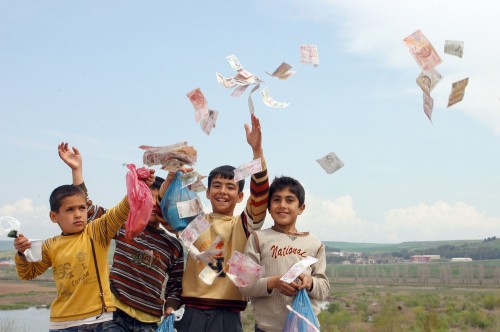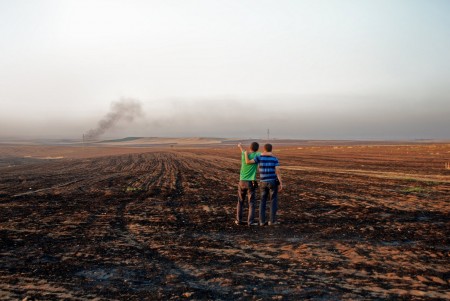If Şener Özmen (the subject of last month’s Turkish and Other Delights post) is the godfather of Diyarbakır’s contemporary art community, then his long-time collaborateur, artist Cengiz Tekin, is its prankster, its Puck, and possibly (though this is pure speculation) its Keith Richards. He exudes a sly, crackling energy, walks with a fast gait just this side of nervous, and is constantly grinning, cracking jokes, and generally entertaining those around him. Despite the considerable language barrier between us (his English was definitely better than my Turkish, but then again my Turkish is limited to ordering takeout and buying groceries and bus tickets), Tekin was, along with Özmen, an engaging and endlessly generous host during my stay in Diyarbakır. I will never forget the two-hour bus ride we spent entertaining ourselves by going through a children’s Turkish-English textbook/dictionary at random, laughing hysterically at its bizarre contextualizing sentences for such essential vocabulary words as “lobster,” “beach ball,” and “criminal.”
Unsurprisingly, this spirit and humor spills into Tekin’s art, where seemingly typical, unremarkable people, locations, and situations are staged and tweaked by the artist to reveal the underlying violence, trauma, instability, and uncertainty that remains the reality for the Kurds of southeastern Turkey. Often they capture moments just before or after a violent act has taken place, but it is never clear what exactly happened (or is about to happen), why the act took place, or the identity of the victim or perpetrator. For example, in Tekin’s 2007 photograph, Natürmort (Still Life), a man lies splayed in a field of wheat, his face obscured by the stalks. Dressed in blue, his attire mirrors the fiery sky that looms above the field, making him seem like a piece of the heavens dropped to the earth. The gun in his limp hand implies that a shoot-out or stand-off of some kind has just transpired–or could it be a suicide? Is the angle of the gun, still cocked and pointed up, a coincidence of the way he fell? Or is he still alive and playing dead in order to ambush his foe, or escape further fighting?
Likewise, in his 2009 essay, “The Stranger,” critic Süreyyya Evren questions the unnatural angle of the neck belonging to a man sandwiched between a giant stack of blankets and pillows in the 2003 photograph Untitled (Press) (one a series of similar images Tekin created involving a human figure inserted into such stacks of bedding), wondering if he is even “really alive? Or faking death like some animals do to survive?” Evren sees Tekin’s photographs as giving voice to “the Stranger,” who, he argues, is
“crucial in the construction of Turkish national identity, and who has been in this position since the beginning of the Turkish Republic. This ‘privilege’ of being considered as ‘the Stranger’ is given to people who are categorized as ‘others within ourselves.’ These strangers, who originate from ‘us’–the Ottoman Empire–and who on various political grounds played an important role as the other for the new Turkish Republic, are the ones who in the national imagination supposedly represent the biggest threat (the ethnic side of this spectrum contains most prominently Armenians, Kurds and Jewish immigrants, and Arabs of various origins).”
According to Evren, the Stranger is inhabited by “historical ghosts” that live in the voids and empty spaces of every day life –for example, in between stacks of bedding–and who speak “with silence, with rests. These repressed forms never talk too much. They can’t talk too much. Their own language is taken away or suspended or repressed. So they express themselves with rests. They talk with hiding, emptiness, voids…” In an analysis of this series, Şener Özmen points that such stacks of bedding are traditionally kept in homes in order to “easily accommodate a possible visit from a relative or a friend,” but that within the Kurdish context, they may potentially be called on for use by “a group of armed men dropping unexpectedly at midnight to spend the night the large number of the household,” a situation which often arose when families were forced to migrate and/or consolidate as a result of violence in their area.
Tekin has revisited the domestic interior at other points in his career, such as in 2005’s Sakin Durum (Calm Situation) and 2009’s Normalizasyon (Normalization). As the the first decade of the 21st century progressed and the armed conflict of the late 20th century retreated further into the past, there was much talk of how conditions in the southeast had “normalized” and the region was being economically and politically integrated into the fabric of Turkish society. However, the reality of continued clashes between Kurds and state police and para-military groups, as well as individuals’ personal struggles to move forward following years of violence and displacement, lent the concept of “normalization” an ironic edge. It is this facet that Tekin speaks to in these simultaneous calm and disrupted images. Is the arm creeping up from underneath the bedding on which the chatting man sits going to attack, or is there to protect him? Where is it coming from? Why is the man destroying the living room floor in Normalizasyon, as the family placidly looks on? Is he breaking in from below, or looking for something? Or is he simply a civic construction worker? The answer is never provided, but the viewer is left with an unsettled feeling that anything but “calm.”

Cengiz Tekin, "Sakin Durum" ("Calm Situation:), C-print. 2005. Courtesy the artist and Outlet-Istanbul.

Cengiz Tekin, "Normalizasyon" ("Normalization"), C-print, 2009. Courtesy the artist and Outlet-Istanbul.
Similarly in the 2009 series of three photographs, Potlatch, a flow of bank notes streams from an unidentified man’s hands into the sky (again, that fiercely blue sky of southern Turkey!), into (or out of?) the gleeful hands of a group of young boys holding bags of toys, and the residential area that hugs the exterior of the ancient city walls of Diyarbakır, where many families, displaced by the fighting in the countryside during the 1980s and 1990s, resettled. In the manner of Tekin’s other works, these photographs present more questions than answers: from whose hands are these funds flowing? To what purposes is it being used? Are the children of Diyarbakir benefiting from this influx of funds in a way that is lasting and meaningful, or is it just providing fleeting distraction? Is it really going to those who are most in need, who suffered the most from the violence, or is it just passing them by?
In an untitled 2010 photograph, two casually dressed young men stand in the middle of a scorched, barren field. One (whom I am fairly certain is Tekin himself) points off into the horizon at a plume of black smoke rising from a distant field. Their casual stance implies that they are less concerned with the devastation that surrounds them than they are with the mysterious smoke in the distance. Is it the evidence of a home or field being burnt in the distance? Is it a destructive act, or merely a farmer burning agricultural refuse? Or is it a signal of some kind, an act of communication? As the men casually lean on one another, they don’t seem poised to act, to rush and help or investigate further; theirs is more of a distant interest, like watching a lioness take down and devour a wildebeest on television. This photograph poses new questions to the viewer not only about the experience of individuals living in a formally war-torn region, but about the act of viewing art that is produced in such regions. As viewers, how are we oblivious to the devastation that surrounds us, wherever we may stand? What is our obligation, as we watch from a distance, to move closer and investigate, instead of just observing? These are questions that Tekin leaves us asking, and as usual, remain unanswered, a silence pouring out from two-dimensional photographic space.

